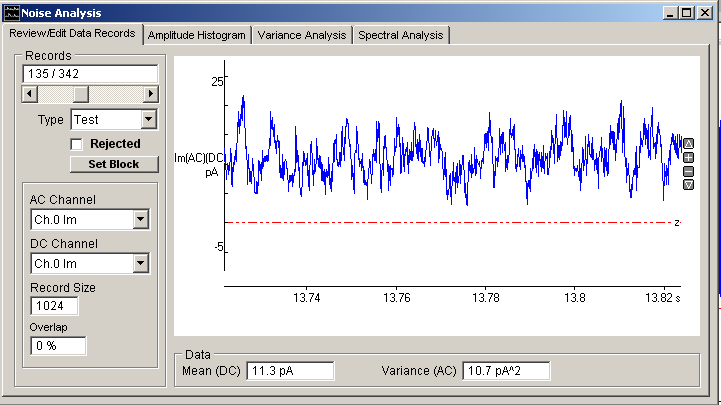Noise Analysis > Noise Analysis
To analyse ionic current noise, select
Analysis
Noise Analysis
to open WinEDR’s module for analysing the random fluctuations in ion channel currents under stationary or semi-stationary conditions.

The module is split into 3 pages each associated with a specific noise analysis operation. The Variance Records page provides tools for the partition of the continuous digitised signal into variance records, rejection of artefact and classification of records. The Variance Analysis page is used to plot the mean, variance and other parameters computed from variance records against each other. The Spectral Analysis page is used to plot the average power spectrum of the signal.
Noise analysis is most commonly applied to the whole cell currents activated by the opening of receptor-activated ion channels.. The figure below shows a typical recording. Recording begins before the agonist is applied in order to obtain a sample of the background noise, the agonist is applied after 10 s and both the mean current and the amplitude of its fluctuations can be seen to increase to a steady state.

A ‘stationary’ random signal is one whose basic statistical parameters (mean, variance, power spectrum) remain constant during the period of the recording. A semi-stationary signal is defined as one where the statistical parameters are not constant, but varying at a rate much slower than the intrinsic fluctuations. A discussion of the theory and practice of noise analysis can be found in Defelice (1981), Eisenberg et al. (1984) or Dempster (1992, 2001).